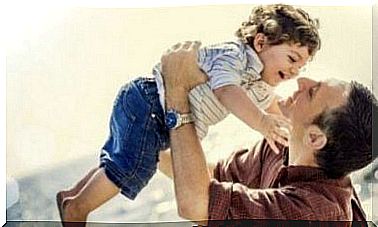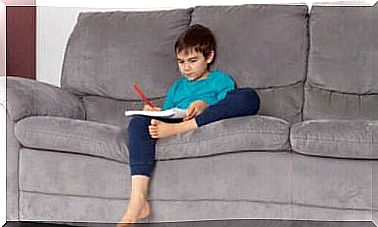Teach Your Child The True Value Of A Gift

Even though most people like to receive a gift, the detail of this fact lies in learning to care for and appreciate what we receive. Show your child the value of the money, work, and effort that can be behind the gifts people give to each other. Teach your child the true value of a gift.
Sometimes when we have financial conditions we make the mistake of giving our children everything they want just to enjoy their happy faces. But we don’t realize that giving them everything they want can lead to very negative attitudes in the future.
A child who is used to getting everything he wants, when he doesn’t, is very likely to manifest negatively. For example, with tantrums, crying and irritation or disrespectfully saying that this is not what she wanted.
If your child wants something very much, you need to teach him what he deserves through positive attitudes. Such as: good behavior, collaboration on small tasks or duties, getting good grades, etc…
That way, your child will appreciate what he struggled to earn. And at the same time you will be instilling values about the meaning of self-effort and commitment.
From a very early age it is necessary to teach children that, when receiving any gift, whether they like it a lot or a little, it is necessary to take into account the good intentions of the people who gave such a gift. You should tell your child about tact, feelings, politeness and, above all, the word gratitude.
The value of a gift: money

Even if you think your child is too young to know about finances, it is imperative to make him understand what money and price are, or the value of things. You can do this through simple examples such as: this toy costs 5 coins and Mom’s wallet only has 3.
Simply explain that you need to make an effort to save and pay bills, food, pay-TV, and toys as well. Teach your child to consider that sometimes even though you can give it all, he won’t always have everything he wants.
That way, even if it’s difficult, he will understand and sympathize with all the responsibilities you have to maintain the home you’re a part of.
A practical way to teach that it is not always easy to get what you want is to reward your child’s good attitudes with money (something symbolic). That way, he’ll be able to buy the toy he wants one day, and if he spends it all on sweets, he’ll learn about the importance of saving money.
The value of a gift: love
You should teach that gifts are given to express affection and interest in a person. The goals are only to demonstrate: love, affection and empathy, without expecting any reciprocity.
Tell your child, for example, how sad he might feel if he gave a picture that he spent hours making to a friend, and the friend said that he didn’t like it very much or that he hoped to get something else.
Even if it seems difficult, he needs to learn to put himself in the shoes of others in order to be a good person. Thus, you will be able to distinguish that what is expensive, big and remarkable is only material. It’s not the most important thing.
The value of a gift: work and effort

If you’ve already explained about money, you also need to say how to get it. In addition to explaining what a job is and why it takes effort so that people can buy a gift.
Working hours to earn money sometimes require a lot of effort and discipline. It’s good to try to put this into practice so that your child knows and lives this experience.
Teaching your child the true value of a gift will make him think, collaborate and be sensitive to the people he lives with. In addition, he will learn to consider and receive with great love whatever people are willing to give.
Most important of all is to teach your child that the best gift is not material. Expressing affection, receiving an unexpected hug or kiss should be the gifts most valued by the givers and recipients.









